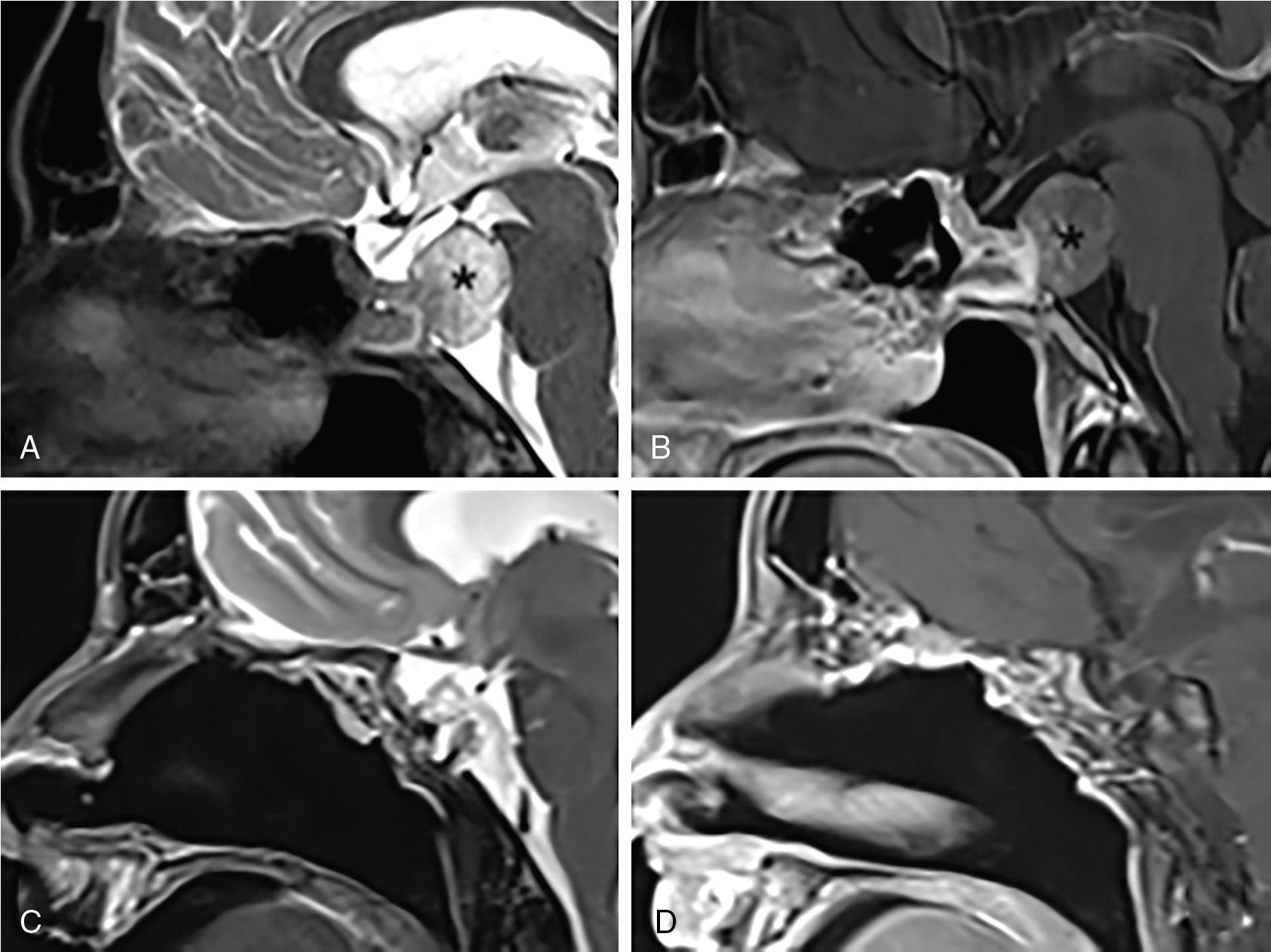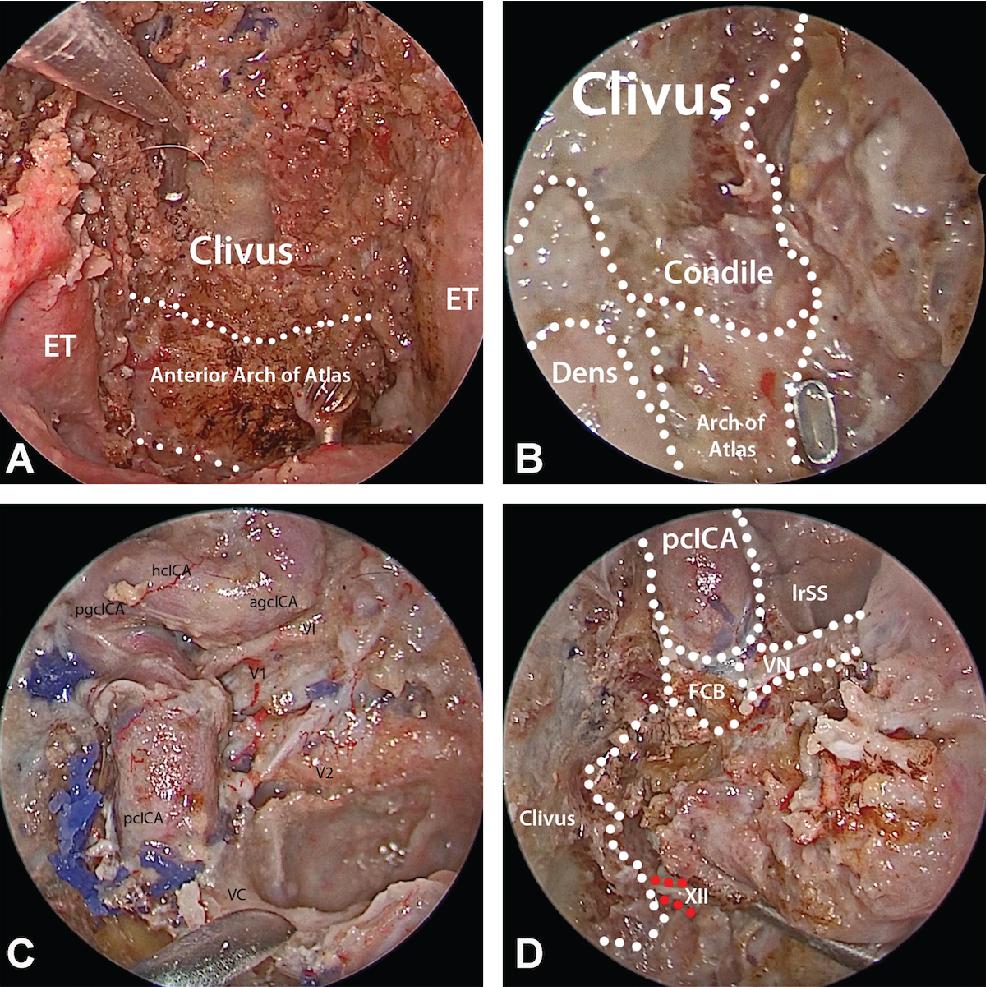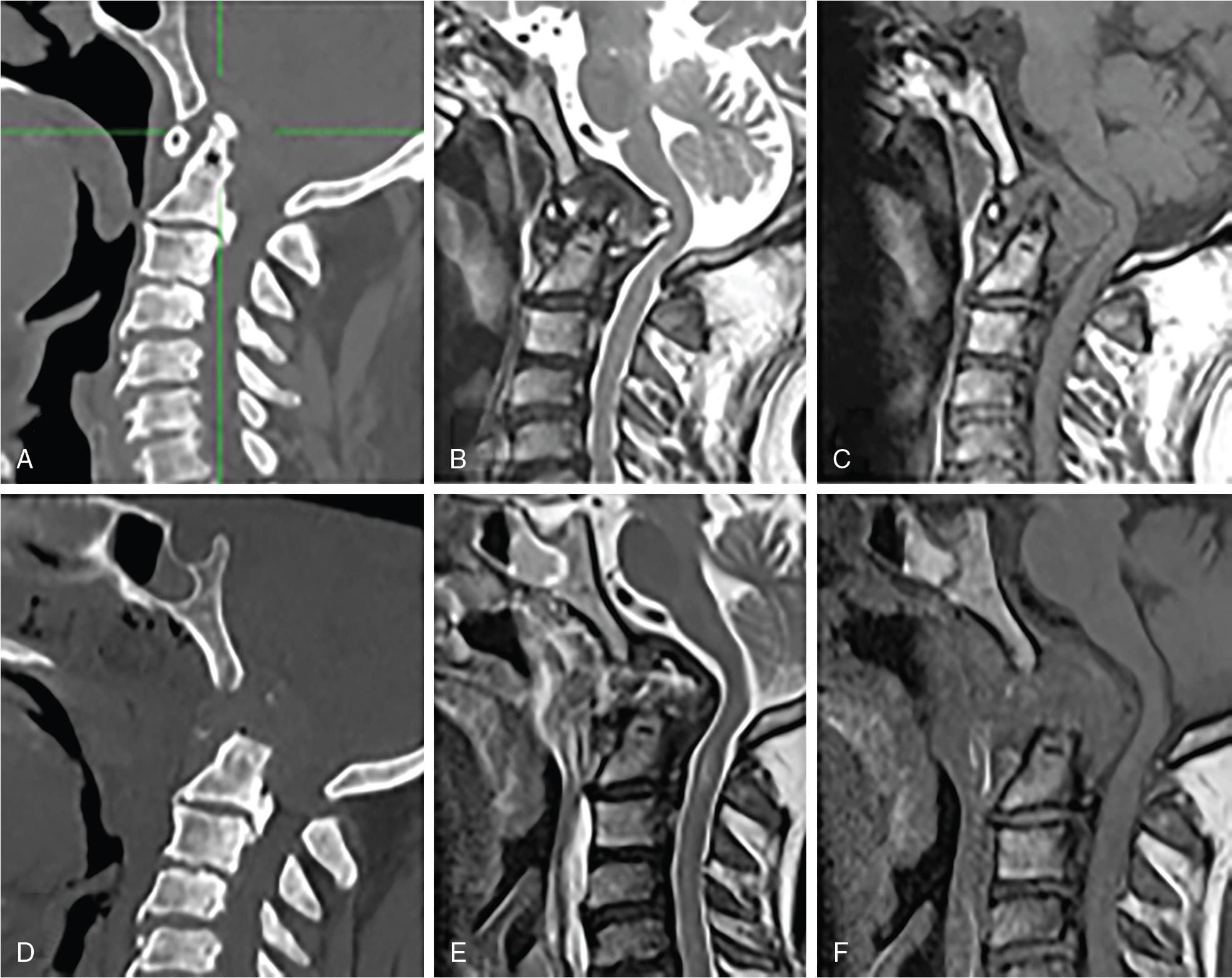Physical Address
304 North Cardinal St.
Dorchester Center, MA 02124
The effectiveness of any endoscopic surgical procedure on the posterior skull base also relies on the ability to repair the resulting defect, which has been a major challenge over the past decade.
The overall goals of reconstruction after endoscopic expanded approaches include separation of the cranial cavity from the sinonasal tract, protection of neurovascular structures, preservation or restoration of cosmesis, preservation or rehabilitation of function, and avoidance of dead spaces. Separation of the cranial cavity from the sinonasal tract prevents postoperative cerebrospinal fluid (CSF leaks, pneumocephalus, and intracranial infections (e.g., ascending bacterial meningitis and abscesses) and protects the cranial nerves and major vessels against desiccation and infection.
In the posterior cranial base, reconstruction is challenging not only because of the size of the defects but also because of the lack of supporting structures associated with the effects of gravity. Other critical factors are the use of nonvascularized grafts, as well as the CSF’s high flow in the posterior skull base and the proximity of delicate neurovascular structures (e.g., internal carotid artery, cranial nerves, cavernous sinus).
Recent experiences in posterior skull base reconstruction, however, are encouraging, with improved outcomes compared with the past ( Table 35.1 ). This may be related to refinements of the free grafting techniques, such as multilayer repair, which reduced the CSF leak rate at the skull base level. Moreover, many pedicled vascularized flaps have now been developed (e.g., the Hadad-Bassagasteguy flap [HDF], middle turbinate flap, nasopharyngeal flap) for reconstruction of skull base defects resulting from endoscopic expanded approaches, with a subsequent global decrease in CSF leak incidence.
| Author (year) | Pathology (cases, n ) | Approach (cases, n ) | Reconstruction Technique | Postoperative CSF Leak | Lumbar Drains |
|---|---|---|---|---|---|
| Leng et al. (2008) |
|
Extended transsphenoidal (10) | Gasket-seal reconstruction technique | None | 50% (5 of 10) |
| Fraser et al. (2010) |
|
Transclival (17) | Gasket-seal reconstruction technique with a vascularized nasoseptal flap | 5.9% (1 of 17) | 47% (8 of 17) |
| Patel et al. (2010) | NA | Transclival (10) | Multilayer reconstruction technique with a vascularized nasoseptal flaps or extranasal flap | 10% (1 of 10) | Used in revision surgeries |
| Fraser et al. (2010) | Chordoma (7) | Transclival (10) | Gasket-seal reconstruction technique with a vascularized nasoseptal flap | None | 10% (1 of 10) |
| Harvey et al. (2012) a | NA | NA |
|
11.5% (70 of 609) | NA |
| Iacoangeli et al. (2014) |
|
Transclival (6) | Multilayer reconstruction technique | None | None |
| Soudry et al. (2014) a | NA | Transclival (51) | Mixed-multilayer reconstruction technique | 20% (10 of 51) | NA |
| Thorp et al. (2014) b | NA | Transclival (5) | Multilayer reconstruction technique with an intranasal vascularized flaps | 40% (2 of 5) | Used in revision surgeries |
| Kamat et al. (2015) |
|
Transclival (9) | Multilayer reconstruction technique with a vascularized nasoseptal flap | 33.3% (3 of 9) | 55.5% (5 of 9) |
| Clavenna et al. (2015) b | NA | NA | Multilayer reconstruction technique with a vascularized nasoseptal flaps or extranasal flap | NA | No recommendations available |
| Sigler et al. (2017) b | NA | NA |
|
8.5% | No recommendations available |
| Kim et al. (2018) |
|
|
Multilayer reconstruction technique with a vascularized nasoseptal flap | 16.7% (7 of 42) | 16.7% (7 of 42) |
| Snyderman et al. (2020) b | NA | NA |
|
NA | NA |
A variety of techniques, depending on the site and size of the skull base defect, can be used (e.g., single- or multilayer techniques, grafts or local vascularized flaps, autologous or heterologous materials), but some key points are fundamental for every technique. These include adequate exposure of anatomic landmarks and proper delineation and exposure of the defect’s margins and their preparation to receive the graft.
To properly manage transclival approaches, three anatomic subregions should be considered:
Upper clivus: extends from the posterior clinoids to the sella turcica’s floor and is bounded laterally by the internal carotid arteries (ICAs) and cavernous sinuses. Because of to its localization behind the pituitary gland, it can only be accessed through the gland’s transposition.
Middle clivus: extends from the sella’s floor to the sphenoid sinus’s floor it is bounded laterally by the paraclival ICA and VI cranial nerve (interdural segment of Dorello’s canal)
Lower clivus: extends from the sphenoidal floor to the foramen magnum and is bounded laterally by the foramen lacerum and hypoglossal canals
Whatever the localization, large defects always require a multilayer reconstruction with intradural and extradural grafts supplemented by adipose tissue and a vascularized flap.
Defects in this area are typically smaller than 2 cm. This kind of approach requires interdural transposition of the pituitary gland on one or both sides. ICA exposition is usually achieved by removing the bone located over the artery. , An intradural collagen graft is placed beyond the defect’s margins, covered by a small extradural (autologous or homologous) fascial graft. The latter is not always required in case of smaller defects. The pituitary gland is then put back in place and provides support to the fascial graft. Lastly, a vascularized nasoseptal flap (NSF) is placed above all, in a vertical or slightly oblique direction, incorporating all septal mucosa while sparing a 1-cm strip below the olfactory sulcus. Because of ICA exposure, rigid reconstruction (with cartilage, bone, or alloplastic material) is not recommended, and a vascularized NSF is preferred for optimal protection of the exposed parasellar ICAs. The reconstruction is supported with morselized collagen material, fibrin glue, or both ( Fig. 35.1 ). A saline-inflated Foley balloon catheter has been proposed to support the reconstruction, but results of this method are unconclusive. Nasal packing is generally placed in nasopharynx at the end of surgery in both nasal cavities.

Defects in these areas are typically moderate sized (3–5 cm) and extend from the floor of the sella to the lower limit of the clivus. Unilateral or bilateral paraclival ICA exposition is usually achieved ( Fig. 35.2 ). An intradural collagen graft is placed beyond the defect’s margins (paying attention, while placing its most lateral aspect, to the interdural segment of the abducens nerve as it enters Dorello’s canal), covered by a large extradural fascial (facia lata) graft that overlaps the dural and bone defect and provides coverage of the defect’s walls, sella, and paraclival ICAs. Because of its geometry, the graft usually tends to get folded, and it should be smoothed out as much as possible before being covered by adipose tissue (harvested from the fascia lata donor site or abdomen), which is useful to prevent pontine herniation. Last, an extended NSF is placed above the entire defect area and paraclival ICAs, in a horizontal direction, incorporating all mucosa from the nasal floor and inferior meatus. Although all adipose tissue should be covered to prevent necrosis and provide vascularization, the fascia lata’s edges may be exposed superiorly, inferiorly, or both.

An important step to consider during lower transclival approaches is the separation between reconstruction and lower nasopharynx and oropharynx to prevent CSF leak from the defect’s caudal limit, an occurrence that would be very difficult to repair.
In such cases, an inverted U-shaped retropharyngeal (RP) flap, inferiorly based, including nasopharyngeal mucosa, muscle, and even basopharyngeal fascia can be elevated with needle-tip electrocautery or diode laser as far inferiorly as the anterior arch of C1 and tucked inferiorly behind the soft palate during tumor resection. For reconstruction, it is brought back up into position after the NSF is in position. It is in opposition to the inferior aspect of the NSF and overlaps the underlying edge of the fascia lata graft. In cases of recurrent leak or large defects in obese patients, the inferior edge of the flap can even be sutured to the RP flap using a running V-Loc suture (Covidien, Medtronic) or similar technique. The reconstruction is supported with morselized collagen material, fibrin glue, and nasal packing. A Foley balloon catheter does not provide adequate support in this region, and there is risk of migration into the oropharynx; therefore, it is not generally used.
The transodontoid approach consists in complete or partial removal of C1’s anterior arch, C2’s odontoid process (dens) and part of its body, and the anterior foramen magnum. Defects in this region are usually significant. An inferiorly based RP mucosal flap is required whenever feasible because of the lack of inferior support. The flap is dissected and reflected inferiorly below the level of C1. Autologous connective layer of fascia lata or, alternatively, a dural substitute can be placed intradurally followed by extradural fascia lata. A small adipose tissue graft may be used to fill the dead spaces of the defect and provide a planar surface for the NSF placement ( Fig. 35.3 ). In the absence of an adipose tissue graft, the defect is often too deep and limits the reach (and coverage) of the NSF. The RP flap is transposed superiorly so that it overlaps the edge of the fascia lata graft and is aligned with the NSF and can be reinforced by suturing the fascia lata or NSF to the RP tissues or edge of the RP flap as described earlier. The reconstruction is supported with morselized collagen material, fibrin glue, and nasal packing.

Become a Clinical Tree membership for Full access and enjoy Unlimited articles
If you are a member. Log in here